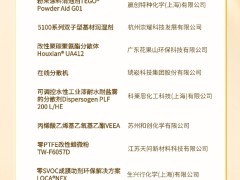据天然气资讯8月6日消息称,数据分析公司GlobalData表示,尽管东南亚是液化天然气的净出口国,但到2030年,东南亚将越来越依赖进口液化天然气,以满足不断增长的需求,并支撑日益减少的国内供应。
随着人口和经济的持续增长,东南亚是未来十年天然气的一个关键增长地区,一些国家将天然气视为满足日益增长的电力需求尽管该地区是天然气净出口国,主要受到马来西亚和印度尼西亚的支持,但强劲的需求增长可能在本十年结束前超过该地区的供应。
GlobalData高级油气分析师Daniel Rogers评论道:“在该地区的天然气和液化天然气前景中,泰国和菲律宾的天然气供需缺口预计将扩大,因为国内供应下降满足了稳定的需求增长。两国将通过增加液化天然气再气化能力,寻求液化天然气市场填补国内生产或管道进口无法填补的缺口。两国目前有超过3万亿立方英尺的再气化产能,计划中的产能约为2万亿立方英尺,已宣布的产能约为1万亿立方英尺,到2030年可能投入使用,相比之下,目前的产能只有0.5万亿立方英尺。”
2020年,泰国和新加坡进口了创纪录的液化天然气数量,缅甸在疫情期间首次进口了液化天然气货物。GlobalData表示,在泰国,液化天然气进口可能变得越来越重要,因为国内供应和从缅甸进口面临自然下降,而这两个国家的需求增长继续上升。即使到2030年,新加坡预计仍将严重依赖天然气,因为该国几乎所有的发电都来自天然气。新加坡去年的液化天然气进口增加了20%,随着管道天然气供应合同在短期内到期,液化天然气进口将对支撑急需天然气的电力结构至关重要。
Rogers先生总结道:“在供应方面,马来西亚和印度尼西亚有一个项目管道,将有助于在短期内提高产量,印度尼西亚增加的近 400 万吨液化天然气液化能力将越来越多地用于供应其国内市场。然而,文莱、越南和缅甸在预测期内面临国内供应下降的风险,除非它们能够推进目前面临挑战的未开发天然气项目。这些项目的进展对其供应前景至关重要。
朱佳妮 摘译自 天然气资讯
原文如下:
Globaldata: Southeast Asia to increasingly rely on LNG imports
Despite being a net exporter of LNG, Southeast Asia is set to increasingly rely on imported LNG through 2030 to meet the growing demand and support the waning domestic supplies, says GlobalData, a data and analytics company.
Southeast Asia represents a key growth region for natural gas over the next decade as populations and economies continue to grow and several countries look to gas for meeting the ever-growing power demand. Despite the region being a net exporter of gas supported mainly by major gas producers Malaysia and Indonesia, strong demand growth could outpace the regional supply by the end of the decade.
Daniel Rogers, Senior Oil and Gas Analyst at GlobalData, comments: “In the gas and LNG outlook for the region, both Thailand and the Philippines’ gas supply-demand gaps are expected to widen as steady demand growth is met by the declining domestic supply. Both countries will look to the LNG market to fill the gap where domestic production or pipeline imports are unable to, through additional LNG regasification capacity. There is over 3 trillion ft3 of regasification capacity in the pipeline, approximately 2 trillion ft3 of planned and 1 trillion ft3 of announced capacity across these two countries that could be online by 2030, this compares to just 0.5 trillion ft3 of capacity currently active.”
In 2020, Thailand and Singapore imported record LNG volumes, and Myanmar imported its first ever LNG cargo despite the pandemic. In Thailand, LNG imports are likely to become increasingly important for the country as both domestic supply and imports from Myanmar face natural decline while the demand growth from these two countries continues to rise, GlobalData states. Even till 2030, Singapore is expected to remain heavily dependent upon gas as it represents almost all the country’s power generation. Singapore’s LNG imports jumped 20% last year and with the piped gas supply contracts expiring over the near term, LNG imports will be vital for supporting a gas hungry power mix.
Mr Rogers concludes: “On the supply side, Malaysia and Indonesia have a project pipeline that will help boost production over the near term and just under 4 million tpy of increased LNG liquefaction capacity in Indonesia will increasingly be used to supply its domestic market. However, Brunei, Vietnam, and Myanmar risk facing domestic supply declines over the forecast period unless they can progress their currently challenged, undeveloped gas projects. Progress of such projects will be pivotal for their supply outlooks.
免责声明:本网转载自其它媒体的文章,目的在于弘扬石化精神,传递更多石化信息,并不代表本网赞同其观点和对其真实性负责,在此我们谨向原作者和原媒体致以敬意。如果您认为本站文章侵犯了您的版权,请与我们联系,我们将第一时间删除。







